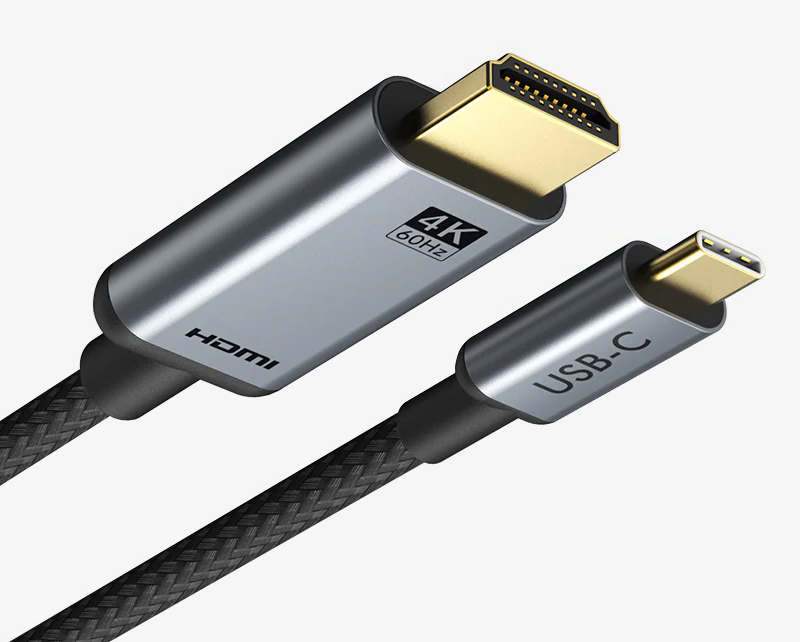Kingsgrove Branch:
USB-C to HDMI

USB-C to HDMI – unlocking a world of visual possibilities. Imagine seamlessly connecting your laptop to a vibrant external display, or effortlessly streaming high-definition content from your smartphone to a large-screen TV. This comprehensive guide dives deep into the fascinating world of USB-C to HDMI adapters, exploring their diverse applications, technical intricacies, and potential pitfalls. We'll explore the different types, their performance, and common troubleshooting techniques
From the sleek simplicity of passive adapters to the powerful performance of active models, we'll analyze the pros and cons of each. We'll also uncover the compatibility secrets, ensuring your devices play nice together. Prepare to navigate the world of resolutions, refresh rates, and the exciting future of this ever-evolving technology
USB-C to HDMI Adapters: A Comprehensive Guide
USB-C to HDMI adapters have become essential accessories for connecting devices with USB-C ports to displays with HDMI inputs. This guide dives deep into everything you need to know about these versatile adapters, from their inner workings to practical applications and future prospects
Introduction to USB-C to HDMI Adapters
USB-C to HDMI adapters are essentially connectors that translate the USB-C port signal into a format compatible with HDMI displays. This allows you to effortlessly extend the screen output of your laptop, tablet, or smartphone to a larger monitor or TV. Different types of adapters exist, each with its own strengths and weaknesses
- Passive Adapters: These adapters simply transmit the signal, requiring no external power source. They're typically cheaper but may limit the resolution or refresh rate supported, depending on the devices connected
- Active Adapters: These adapters incorporate a power source, often enhancing performance by supporting higher resolutions and refresh rates, especially when dealing with high-bandwidth devices. They tend to be more expensive
Using a USB-C to HDMI adapter offers several benefits, such as extending your screen to a larger display, enabling video output from devices without built-in HDMI ports, and offering a convenient alternative to more complex setups. However, some drawbacks include potential compatibility issues with certain devices or resolutions, and the need for an active adapter for higher-quality output
Technical Specifications and Compatibility
Understanding the technical specifications of USB-C and HDMI ports is key to ensuring compatibility. USB-C ports, with their versatility, can transmit video signals, but the specific capabilities depend on the device. HDMI ports, on the other hand, are designed for video output and can support various resolutions and refresh rates. Compatibility issues often arise due to discrepancies in the bandwidth or power requirements between the devices and the adapter
- USB-C Port Specifications: USB-C ports support different video standards, including DisplayPort Alternate Mode (DP Alt Mode). The actual video output capabilities depend heavily on the specific USB-C port implementation
- HDMI Port Specifications: HDMI ports support various resolutions and refresh rates. Higher resolutions and refresh rates generally demand more bandwidth, potentially requiring an active adapter for proper performance
- Compatibility Issues: Not all USB-C devices support all HDMI resolutions. For example, a basic passive adapter might not handle 4K output from a modern laptop, requiring an active adapter for optimal compatibility
Usage Scenarios and Applications
USB-C to HDMI adapters find extensive use in various scenarios. They allow you to connect laptops to external monitors, enabling more comfortable work or entertainment sessions. They also empower smartphones and tablets to display their content on larger screens, enhancing the viewing experience
- Laptops and External Displays: This is a common application, enabling users to easily extend their laptop's screen to a larger monitor. This is especially useful for presentations, video editing, or simply having a more spacious workspace
- Smartphones and TVs: This allows you to mirror or extend your phone's screen to a TV, ideal for watching videos, gaming, or presentations on a larger screen
- Tablets and Projectors: Similarly, tablets can be connected to projectors, enabling interactive presentations or multimedia displays
Schnap.com.au Product Sourcing
Schnap.com.au likely offers a range of USB-C to HDMI adapters, potentially catering to various needs and budgets. To compare, you might check with other retailers for similar products to assess pricing and features
| Schnap.com.au Product | Features | Price | Comparison |
| Example Adapter 1 | Passive, 1080p | $19.99 | Compare to similar passive adapters from other vendors |
| Example Adapter 2 | Active, 4K | $39.99 | Compare to active 4K adapters from other vendors |
Performance Considerations
Several factors affect adapter performance. Bandwidth limitations can hinder higher resolutions or refresh rates. Latency, the time delay between input and output, can affect responsiveness, especially in interactive applications. High-quality adapters are designed to minimize these issues
- Bandwidth: Adequate bandwidth is crucial for smooth video output, especially at higher resolutions and refresh rates
- Latency: Low latency is vital for interactive applications, like gaming, where responsiveness is essential
- Video Quality: Different adapters can significantly affect the video quality. Poor adapters might introduce noise or artifacts
Troubleshooting and Common Issues, Usb c to hdmi
Common issues include no video output or poor image quality. These problems often stem from compatibility issues, faulty adapters, or incorrect settings. Troubleshooting usually involves checking connections, device settings, and adapter compatibility
| Problem | Possible Cause | Troubleshooting Steps |
| No video output | Loose connection, incorrect settings, incompatibility | Check connections, adjust settings, ensure compatibility |
| Poor image quality | Faulty adapter, bandwidth limitations | Try a different adapter, check bandwidth requirements |
Future Trends and Developments
Future developments in USB-C and HDMI technologies will likely drive advancements in USB-C to HDMI adapters. Expect faster data transfer rates, higher resolutions, and improved compatibility with various devices
- Faster Data Transfer Rates: Future USB-C standards may support even higher data transfer rates, allowing for higher resolutions and refresh rates
- Improved Compatibility: Increased compatibility between devices and adapters is expected, reducing compatibility headaches
- Miniaturization: Future adapters might be even smaller and more portable, designed for specific niche applications
Closure: Usb C To Hdmi
In conclusion, USB-C to HDMI adapters have revolutionized how we connect our devices to external displays. This guide has provided a detailed overview, covering everything from basic functionality to advanced troubleshooting. Whether you're a tech enthusiast or simply looking to expand your visual capabilities, understanding the intricacies of USB-C to HDMI adapters is key. Armed with this knowledge, you'll be able to make informed decisions and connect your devices with confidence, see VGA to HDMI
Essential Questionnaire
Can I use a USB-C to HDMI adapter to connect my tablet to a projector?
Possibly, but it depends on the specific tablet and projector models. Check the technical specifications of both devices to ensure compatibility. Some tablets may not support the necessary output
What are the common reasons for no video output with a USB-C to HDMI adapter?
Several issues can cause no video output. First, ensure the adapter is correctly plugged into both the USB-C port and the HDMI port. Check the display settings on your device, and ensure the correct resolution and refresh rate are selected. Also, make sure the device is powered on
What's the difference between passive and active USB-C to HDMI adapters?
Passive adapters rely on the source device's power for video signal transmission, while active adapters provide additional power to the display. Active adapters typically support higher resolutions and refresh rates but can be more expensive
How do I choose the right USB-C to HDMI adapter for my needs?
Consider the resolution and refresh rate requirements of your display. If you need higher resolutions or refresh rates, opt for an active adapter. Check compatibility with your specific devices, and compare prices and features from various vendors
Recent posts

Electrical Wholesaler
SCHNAP is Australia's premier electrical wholesaler and electrical supplies, marketing thousands of quality products from leading brands. Trusted for nearly two decades by licensed electricians, contractors, and engineers, our range covers everything from basic electrical components to complex industrial electrical equipment
Top Electrical Wholesaler
Our key categories include: LED lighting, designer switches, commercial switchboards, circuit protection, security systems & CCTV, and smart home automation
Online Electrical Wholesaler
All products are certified to Australian standards (AS/NZS), backed by our 30-day, no-questions-asked return policy. Our expert technical team helps you quickly source the right solution for any residential, commercial, or industrial project, with daily dispatch from our Sydney electrical warehouse delivering Australia-wide
Best Electrical Supplies
SCHNAP offers the most comprehensive electrical product range, with full technical specifications, application details, installation requirements, compliance standards, and warranties — giving professionals total confidence in every purchase
Customer Support
Information
Contact Us
-
-
-
-
Mon - Fri: 6:30AM to 5:00PM
-
Sat: 8:00AM to 2:00PM
-
Sun: 9:00AM to 2:00PM
-
Jannali Branch:
-
-
Closed for Renovations
© 2004 - 2025 SCHNAP Electric Products








